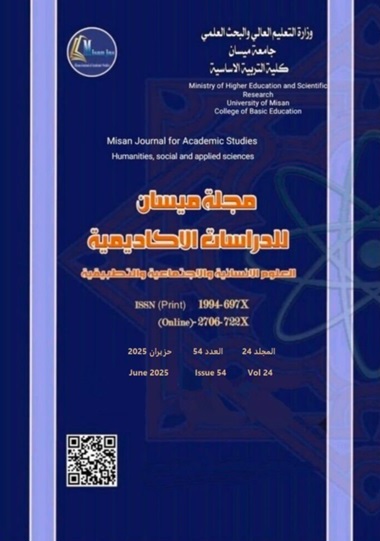The Intertextuality in Modern Novel: a case study in its origins, manifestations, and Interpretation
Abstract
This paper aims to examine the phenomenon of intertextuality in the modern Arabic novel. It discusses the origins of this phenomenon and its various manifestations in Arabic narrative texts. The study also explores the influence of intertextuality on narrative structure and novelistic style, as well as its impact on language and linguistic expression.\
Furthermore, the paper investigates how intertextuality engages with characters and narrative patterns, shaping both the form and content of the text. It also considers the effect of intertextuality on the reader’s interpretation and its role in contemporary literary criticism.
The study highlights the significance of Arabic literary heritage and its connection to modern texts, showing how intertextual references contribute to a renewed understanding of Arab identity. Through this analysis, intertextuality is presented as a creative and dynamic tool that helps reconfigure Arabic literary identity.
Ultimately, studying this phenomenon enables both readers and critics to gain deeper insights into modern Arabic literature. The paper focuses on critical approaches and textual analyses that emphasize literary metaphors and cultural intersections in contemporary Arabic novels.
Downloads
Copyright (c) 2025 (Humanities, social and applied sciences) Misan Journal of Academic Studies

This work is licensed under a Creative Commons Attribution-NonCommercial-NoDerivatives 4.0 International License.
The copyright is also the copyright of the magazine only.
All articles published in our magazine are subject to license terms
Creative Commons Attribution(CC BY-NC-ND 4.0) This license permits the content to be reproduced, redistributed and reused in whole or in part for any purpose free of charge, without any permission from the author(s), researcher or student.
Works submitted to Maysan Journal of Academic Studies for publication in the journal (CC BY-NC-ND 4.0) license terms. Where available content can be shared, distributed and replicated provided there is no commercial profit and appropriate credit must be given to the original source through sources or citations. It is mandatory to review any material used from other sources including shapes, tables, and images for re-use under the terms of the Creative Commons License (CC BY-NC-ND 4.0).Provided that there is no modification to the original content



